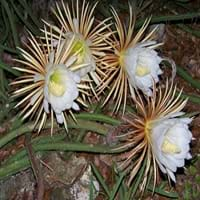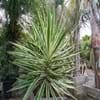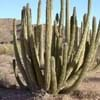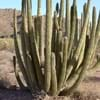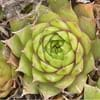Life Span
Perennial
Annual and Perennial
Type
Shrub
Cactus or Succulent
Origin
Southwestern United States, Mexico
Mexico, Caribbean, Central America, South America
Types
Yucca aloifolia 'Purpurea' , Yucca aloifolia
Not avilable
Habitat
coastal environs, Coastal sand dunes, mild coastal areas
Desert
USDA Hardiness Zone
7-9
Not Available
AHS Heat Zone
9-7
Not Available
Sunset Zone
2a, 2b, 3a, 3b, 4, 5, 6, 7, 8, 9, 10, 11, 12, 13, 14, 15, 16, 17, 18, 19, 20, 21, 22, 23, 24
Not Available
Habit
Rosette/Stemless
Weeping
Minimum Width
Not Available
Flower Color
Pink, Ivory
Dark Salmon, Sandy Brown, White, Yellow
Flower Color Modifier
Bicolor
Multi-Color
Leaf Color in Spring
Green, Gray Green, Dark Green
Not Available
Leaf Color in Summer
Green, Gray Green, Dark Green
Not Available
Leaf Color in Fall
Green, Gray Green
Not Available
Leaf Color in Winter
Green, Gray Green, Dark Green
Not Available
Leaf Shape
long with sharp edges
Succulent
Plant Season
Spring, Summer, Fall, Winter
Not Available
Sunlight
Full Sun
Full Sun, Partial shade
Growth Rate
Very Slow
Fast
Type of Soil
Loam, Sand
Sand
The pH of Soil
Acidic, Neutral, Alkaline
Alkaline, Neutral, Not Available
Soil Drainage
Well drained
Well drained
Bloom Time
Late Spring, Early Summer
Early Spring, Early Summer, Late Spring, Late Winter, Mid Spring
Repeat Bloomer
No
Not Available
Tolerances
Drought, Salt
Drought
Where to Plant?
Ground
Container, Ground, Pot
How to Plant?
Cuttings, Divison
Grafting, Seedlings
Plant Maintenance
Medium
Medium
Watering Requirements
Keep the Soil well drained, Needs very little water
Average Water Needs
In Summer
Lots of watering
Lots of watering
In Spring
Moderate
Moderate
In Winter
Average Water
Average Water
Soil pH
Acidic, Neutral, Alkaline
Not Available
Soil Type
Loam, Sand
Not Available
Soil Drainage Capacity
Well drained
Not Available
Sun Exposure
Full Sun
Not Available
Pruning
Remove damaged leaves, Remove dead branches, Remove dead leaves
Not Available
Fertilizers
All-Purpose Liquid Fertilizer
All-Purpose Liquid Fertilizer
Pests and Diseases
Leaf spot, Scale
Not Available
Plant Tolerance
Drought, Salt
Drought
Flower Petal Number
Single
Semi-Double
Fragrant Leaf
No
Not Available
Foliage Texture
Bold
Bold
Foliage Sheen
Matte
Not Available
Attracts
Butterflies, Not Available
Not Available
Allergy
Unknown
Itchiness
Aesthetic Uses
Borders, Cottage Garden, Wild gardens, Woodland margins
Hanging Basket, Showy Purposes
Beauty Benefits
Not Available
Not Available
Environmental Uses
Air purification
Not Available
Medicinal Uses
No Medicinal Use
Not Available
Part of Plant Used
Not Available
Fruits, Nut
Other Uses
Beneficial species for attracting pollinators
Used As Food, Used as Ornamental plant, Used for Landscaping
Used As Indoor Plant
No
Yes
Used As Outdoor Plant
Yes
Yes
Garden Design
Rock Garden, Wall, Wildflower
Container, Houseplant, Lawns and Turf, Mixed Border, Not Available, Tropical
Botanical Name
YUCCA harrimaniae
Selenicereus pteranthus
Common Name
mound lily
Selenicereus, Moonlight cactus
In Hindi
palm lily
moonlight cactus
In German
palm lily
Selenicereus
In French
palm lily
Selenicereus
In Spanish
palm lily
Selenicereus
In Greek
palm lily
Selenicereus
In Portuguese
palm lily
Selenicereus
In Polish
palm lily
Selenicereus
In Latin
palm lily
moonlight cactus
Phylum
Magnoliophyta
Tracheophyta
Class
Liliopsida
Magnoliopsida
Order
Liliales
Caryophyllales
Family
Agavaceae
Cactaceae
Clade
Angiosperms, Monocots
Angiosperms, Core eudicots, Eudicots
Tribe
Not Available
Hylocereeae
Subfamily
Agavoideae
Cactoideae
Number of Species
Not Available
Not Available
Importance of Palm lily and Moonlight cactus
Want to have the most appropriate plant for your garden? You might want to know the importance of Palm lily and Moonlight cactus. Basically, these two plants vary in many aspects. Compare Palm lily and Moonlight cactus as they differ in many characteristics such as their life, care, benefits, facts, etc. Every gardener must at least have the slightest clue about the plants he wants to plant in his garden. Compare their benefits, which differ in many ways like facts and uses. The medicinal use of Palm lily is No Medicinal Use whereas of Moonlight cactus is Not Available. Palm lily has beauty benefits as follows: Not Available while Moonlight cactus has beauty benefits as follows: Not Available.
Compare Facts of Palm lily vs Moonlight cactus
How to choose the best garden plant for your garden depending upon its facts? Here garden plant comparison will help you to solve this query. Compare the facts of Palm lily vs Moonlight cactus and know which one to choose. As garden plants have benefits and other uses, allergy is also a major drawback of plants for some people. Allergic reactions of Palm lily are Unknown whereas of Moonlight cactus have Itchiness respectively. Having a fruit bearing plant in your garden can be a plus point of your garden. Palm lily has showy fruits and Moonlight cactus has showy fruits. Also Palm lily is not flowering and Moonlight cactus is flowering. You can compare Palm lily and Moonlight cactus facts and facts of other plants too.

